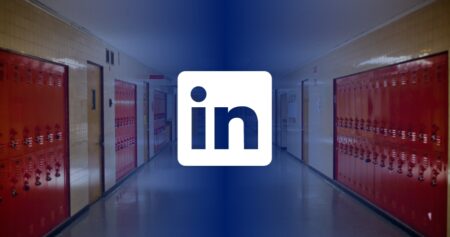It’s no secret: Attracting and retaining teachers, administrators, and staff is an ongoing challenge for schools and districts nationwide. In fact, the National Center for Education Statistics reports that, for roughly two thirds of K-12 public schools in the U.S. the primary hiring challenge is that too few candidates are applying for teaching jobs and other administration and staff positions. Meanwhile, there are 77 job applications submitted via LinkedIn (the leading professional networking and business-focused social media platform) every second! What’s more, six people are hired on LinkedIn every second and a whopping 75% of workers who recently changed jobs used LinkedIn to research career options and opportunities.
For businesses and even nonprofits, LinkedIn is a crucial recruiting tool, but schools and districts have been slower to adopt it. That means there’s an incredible opportunity for schools and districts to build and establish a reputation on a platform used almost exclusively for professional networking and hiring. But that’s just the beginning. The benefits of LinkedIn for schools go far beyond hiring. Here, we’ve outlined 10 reasons schools and districts absolutely must be on LinkedIn.
1. PR and Reputation Management
LinkedIn provides schools and districts with a professional platform to showcase achievements, share success stories, and highlight educational programs. Indeed, many community leaders and stakeholders–including education foundations, chambers of commerce, and other organizations have a strong presence on LinkedIn, making it crucial for the school to join the conversation in a meaningful and memorable way.
2. Recruiting
Recruiting is certainly happening on LinkedIn, with its vast network of professionals, presenting ongoing opportunities for schools and districts to attract high-quality candidates for teaching, administrative, and staff positions. Use the platform to post positions. It’s also a good idea to indicate when you’re hiring by asking administrators to update their profile pictures with #imhiring frames.
3. Retention
Schools and districts can use LinkedIn to promote internal job openings, share resources, and encourage networking among educators and staff. More importantly, something truly impactful happens when schools and districts are sharing inspiring stories on LinkedIn: Administrators share them too! These stories cultivate a sense of belonging that has a compounding effect and leads to higher retention rates across all kinds of positions.
4. Alumni Relations
LinkedIn is a powerful platform for schools and districts to connect with their alumni networks. By maintaining a dedicated page and engaging with former students, educational institutions can nurture relationships, promote alumni achievements, and encourage ongoing involvement and support. LinkedIn users can also search for other users based on the schools they’ve attended, making it especially important for secondary and post secondary schools to have an active page that represents their school well.

5. Fundraising
LinkedIn provides schools and districts with a means to engage with potential donors, sponsors, and philanthropic organizations. By showcasing their educational initiatives, success stories, and impact, educational institutions can attract financial support and build meaningful partnerships that contribute to their fundraising efforts.
6. College & Career Readiness
It’s important for students, especially high school students, to have at least some exposure to LinkedIn as users, especially since it will likely be an important tool for finding internships, networking groups, and other career opportunities and connections. Having a presence on LinekdIn with content contributions from students sets them off on the right foot.
7. Enrollment & Student Recruitment
LinkedIn can serve as a valuable platform for schools and districts to reach prospective students and their parents. By actively engaging in conversations, sharing insights about educational programs, and showcasing student achievements, educational institutions can generate interest and attract new enrollments.
8. Connections to Businesses
LinkedIn is a great place for schools and districts to highlight relationships, sponsorships, scholarships, donations, volunteer opportunities, and other collaborations with local businesses. This facilitates partnerships, work-based learning opportunities, and collaborations that bridge the gap between education and the workforce, enriching students’ learning experiences and expanding their career prospects.
9. Community Support & Engagement
By establishing a presence on LinkedIn, schools and districts can engage with their local community and foster a sense of belonging. Through thought leadership content, community events, and collaborative initiatives, educational institutions can strengthen relationships with parents, community leaders, and organizations, leading to increased support and engagement.
10. Post-Secondary Partnerships
LinkedIn enables schools and districts to forge connections with colleges, universities, and other post-secondary institutions. By leveraging the platform’s networking capabilities, educational institutions can establish partnerships that facilitate student transitions, promote articulation agreements, and provide pathways for continued education beyond high school.

Get Started
Interested in getting your school or district set up on LinkedIn but not quite sure where to start? Check out this quick guide to setting up a school or district profile on the platform, and this comprehensive playbook for all things LinkedIn. Class Intercom is also here to help! We work with schools and districts all over the country and around the world to help them create, curate, and share content in a way that maximizes their LinkedIn presence in an efficient and effective way.
Follow the link below or contact us at info@classintercom.com to learn more.
